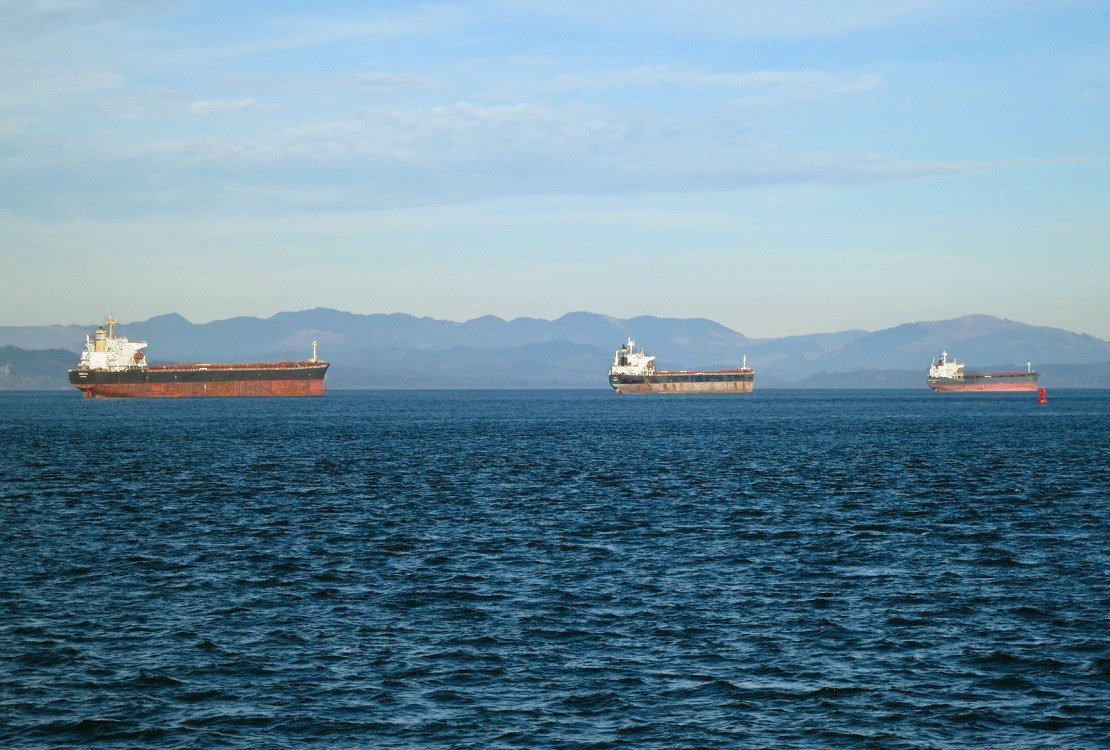Leadership from the Ports of Longview and Kalama, and the U.S. Army Corps of Engineers have agreed to fund an estimated $2.1 million study that will investigate what changes or improvements engineers can make to turning basins in the Columbia River to help larger, deeper-drafting vessels, safely navigate when turning.
Currently, there are very few places on the lower Columbia River to turn large, fully loaded ships. These vessels need to be turned around before passing through Longview, Washington when Pacific Northwest storms force Columbia River Bar closures for unsafe conditions.
“It’s critical for us to ensure the Columbia River Federal Navigation Channel is reliable and safe,” said Col. Michael Helton, Portland District commander. “An additional turning basin and improvements to another in the system will provide additional safety in the lower river if the bar conditions require a vessel to change its course,” he said.
The primary benefit of improvements to the turning basins at the Ports of Kalama and Longview would be a decrease in transportation delay costs.
“Our region’s economy relies on the safe and efficient navigation of the Columbia River,” said Dan Stahl, Port of Longview chief executive officer. “Public investments in river infrastructure, such as the turning basins, ensure the Port of Longview can continue to safely move commerce to and from international markets while driving the local economy for decades to come.”
Cargo volumes have increased 17.4%, and larger, deeper-drafting vessels are making increased usage of the river system.
“The value of our partnerships with the Corps, neighboring ports and our stakeholders on the river can’t be overstated enough,” said Patrick Harbison, Port of Kalama commission president. “This important new infrastructure will assure the Port of Kalama’s continued growth, while providing system-wide improvements to navigational safety on the Columbia River.”
Corps staff are anticipating that improvements in the Longview and Kalama area would most efficiently serve the purpose with minimal environmental impacts and do so in the most congested areas of the river.
The Corps-led study will seek to improve navigation features at Kalama and Longview; however, these would only be recommendations. Congress would then need to authorize and fund.
The Columbia River is the number one U.S. export gateway for wheat and barley, the number two U.S. export gateway for corn and soy, and the number one U.S. export gateway for West Coast mineral bulk. The Columbia River system is also a national leader for wood exports and auto imports and exports.
A 2021 “Federal Legislative Agenda” from the Columbia River Steamship Operators’ Association says:
We support funding and maintenance of the critical turning basins on the Lower Columbia River. Because the Columbia River navigation channel is only 600’ wide and a Panamax vessel calling the Columbia River can be over 750’ long, the Columbia River Steamship Operators’ Association and the Columbia River Pilots who navigate our vessels rely on turning basins to safely turn around. Turning basins are necessary throughout the river system to ensure adequate area for safe maneuverability of fully laden vessels and during times of emergency.
• Establish a Federally Authorized Turning Basin at RM 77 (Kalama)
• Longview Turning Basin Maintenance
• Astoria Turning Basin Maintenance
• Albina Turning Basin Maintenance and Dredging Preparation
Also see:
–CBB, July 29, 2021, GROUP SEEKS ESA CONSULTATIONS OVER EXPANSION OF LARGE SHIP TRAFFIC IN COLUMBIA/SNAKE RIVERS; SAYS WAKE STRANDING HARMS LISTED FISH https://columbiabasinbulletin.org/groups-seeks-esa-consultations-over-expansion-of-large-ship-traffic-in-columbia-snake-rivers-says-wake-stranding-harms-listed-fish/

